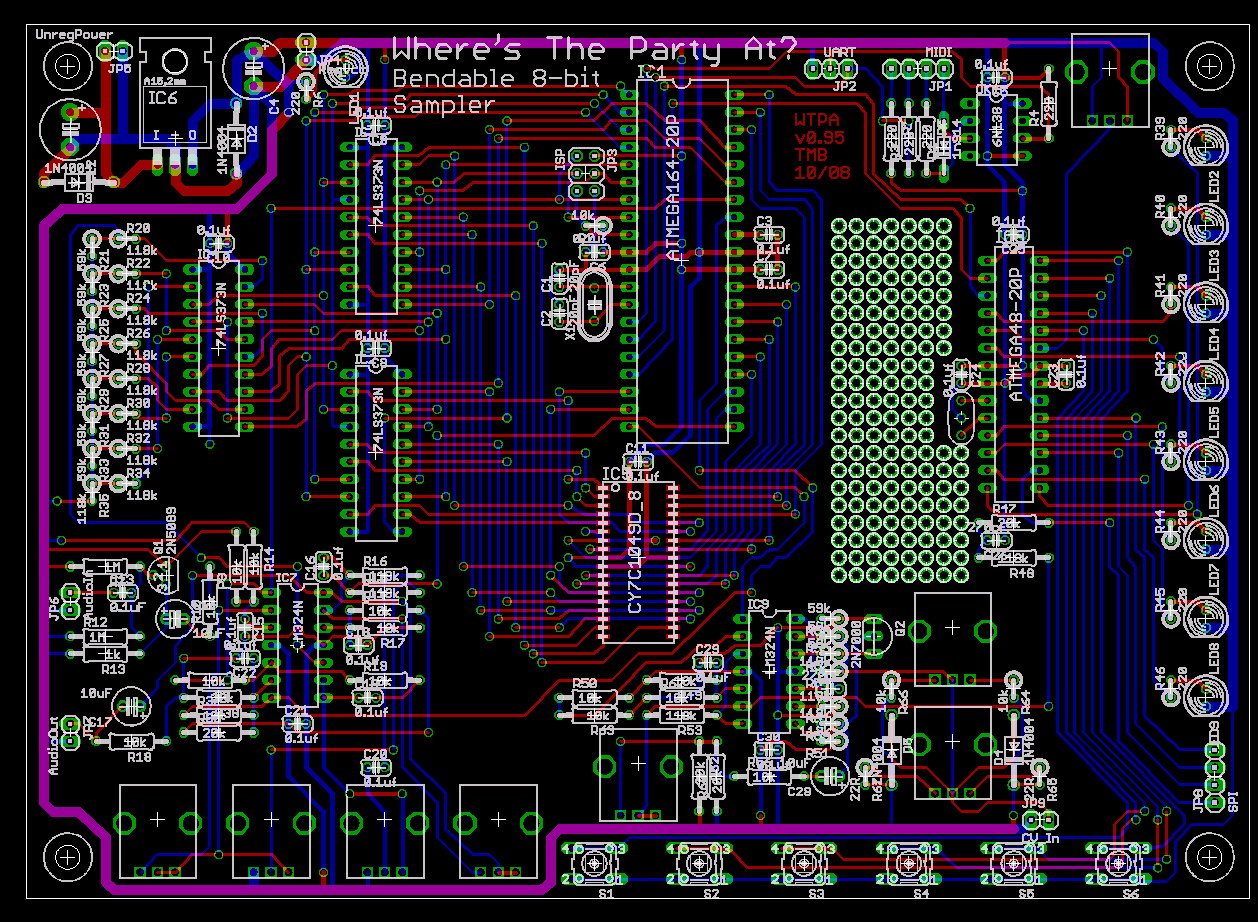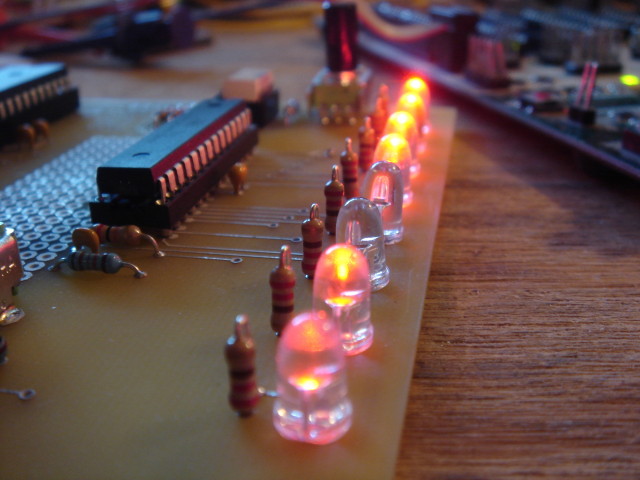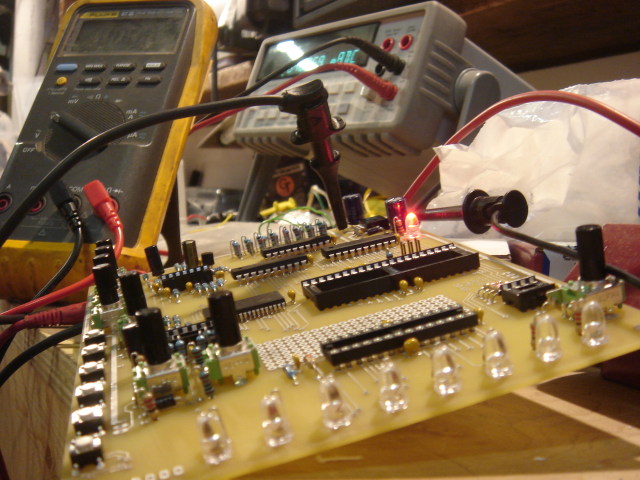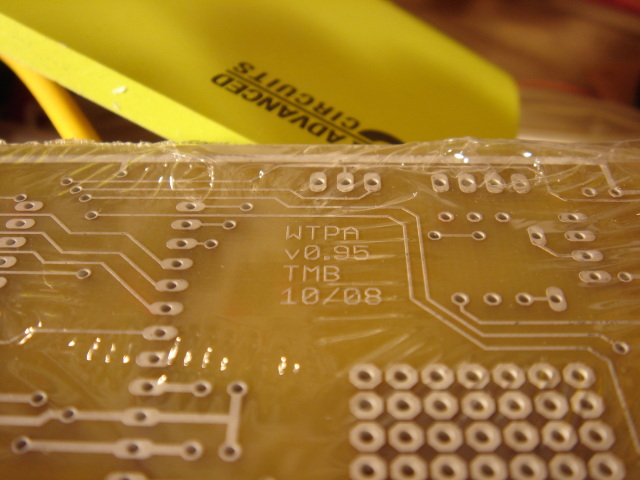Yo! A lot has happened since the last time I posted here. For one I’ve organized this site more logically, with the most recent *ish at the top. But the most important thing is this:

I’m done with the new WTPA boards! Done, at least with the schematics and layouts. I’m currently printing up (another) prototype run of bare PCBs to work out any (who’s placing bets?) hardware bugs before I make the *BIG ORDER*. There’s a lot to say about the new designs, but, like the Roc Boys: Speech: First Of All I’d Like To Thank My Connects–
After Bent in the spring, four brave souls bought beta versions of WTPAs and –Lordy– all four really built them! Their contributions and comments on the process were invaluable to this latest version. MAKE Magazine and its denizens have hooked me up with a lot over the last year and most recently the opportunity to talk about WTPA at American Maker at the Museum of Science and Industry here in Chicago. That in turn led to some writeups on Create Digital Music and Hackaday and the resulting diarrhea-esque inbox explosion did a lot towards cattle-prodding me into getting this project rolling along better. It also felt really good. So, big propers to all of them, and all y’all who wrote to me with suggestions, requests, and kind words. Special thanks to Richard How for sending me a properly compressed version of the demo video that I listed below.
Now, sincere acts of ass-licking aside, let’s talk electronics:
Those of you who are dorks can probably tell that there are some differences between the latest boards and the first run. In that poetic way that HTML lets us do so well, here is a Canonical List of changes and features:
- The RAM chip is now surface mount. This was a hard call b/c so many kit builders are put off by SMT, but 4 out of 4 beta testers (and 1 out of 1 Todd Baileys) wished they had more recording time, and the old memory chip was the biggest SRAM I could find in through-hole. So there’s now 512k of RAM as opposed to 32k — 16x as long sampling time. I promise that with a little practice and anything but the crappiest iron you can solder it.
- The latches are parallel rather than serial latches. This means that there are fewer clock signals buzzing around the board, and the data rates are generally higher.
- Support for the onboard PWM-based synth was dropped. It was pretty lame, and besides, this is a sampler.
- There’s another op amp. This helps some (hopefully) cool stuff happen:
- There’s way better separation between the quiet analog sections, the noisy analog sections, and the REALLY noisy digital sections. An 8-bit sampler is supposed to be crusty, but there were some really annoying whines that were a function of crap getting into the high impedance amplifiers.
- Better pre-amp design.
- The sample-rate clock is now a VCO. Originally I did this so that I could route a quiet control voltage to the frequency control pot instead of a noisy audio frequency square wave, but I figured while I was at it I could include a CV input, too.
- The gain mismatch between sampling and overdubbing should be fixed.
- There’s an exciting new error source to tweak: CLOCK JITTER! In the spirit of exploring cool sounding sampling “flaws” (like low bit-depth, aliasing, low sample rate, etc) I included a circuit that lets the user optionally add an adjustable amount of jitter to the clock. We’ll see how that sounds, but I’m excited.
- I decided to add a SECOND microcontroller (and lose a latch). This guy mostly handles the switches and LEDs, and generates a PSRB as a noise source for the jitter generator. This is a little bit of a splurge, but it frees up pins (and some cycles) on the main MCU for cooler things (like parallel interfaces and more RAM lines) and allows us to PWM the LEDs, which just looks cool. It also allows us a deicated SPI interface which we could conceivably interface to permanent memory, like an SD Card. That’s pretty low on the priority list for me, but it’d be a really cool feature to add later.
- Another practical upshot of this is more switches in user interface. The menu system on the old one was a little byzantine to some people (and sometimes me).
- MIDI is fully implemented. MAN, this was a huge improvement! I use my beta version with an MPK49 all the time and it’s SOOOO much better than fiddling with little knobs and tact switches. It’s a priority of mine to make sure this works with Ableton Live before I release the final revision.
- Probably some other stuff I’ve forgotten.
As well as another heartrendingly beautiful, autumn-sunset-like list of FAQs, gathered from emails and the like:
- When can I buy one?
- Soon. Soon? Before the holidays, I think. Is that soon?
- Why so long?
- I’ve got an OS to re-write, and testing to do as well as a lot of logistical stuff like hounding Chinese factories to send me parts, which is about as much fun as mowing the lawn. Or HTML.
- How much will they cost?
- I’d rather not say on the site, mostly because I’m honestly not sure. There are still enough pending weird money chats with distributors and stuff that I can potentially put my foot in my mouth pretty seriously.
- Where’s the source, you dingus? You said this was open source!
- Yeah, yeah. It is. Sorry. But while I’m still tweaking everything it’s a pain in the ass to maintain a public version. The PCB isn’t final yet, the code has potential bugs and unimplemented, un-optimized stuff, and I’d rather spend my time knocking out features and fixes than answering email. This is a little selfish, perhaps, but rest assured that once I release the real thing you will likely have more gibberingly verbose C code and notes than you care to read. I promise :-)
- How’d you learn this stuff?
- A lot of twiddling with a scope. Read this, get an oscilloscope and a breadboard, pick an anlog project that you love, do it, then learn how assembly code works, do a project with it, and finally make friends with GCC. It really, really helps to love what you’re doing. I think about electronics when I’m on dates and stuff (although I didn’t always. Give it time. And don’t blame me for the obvious wet blanket this will toss on your pimp game).
- Are you completely and utterly on the jock of Jim Williams?
- As a matter of fact, I am :) I have a lot of other personal mentors to whom I owe volumes and who I won’t embarrass by mentioning on this site, like this guy who taught me pretty much everything I know about C programming.
- Do you Twitter?



